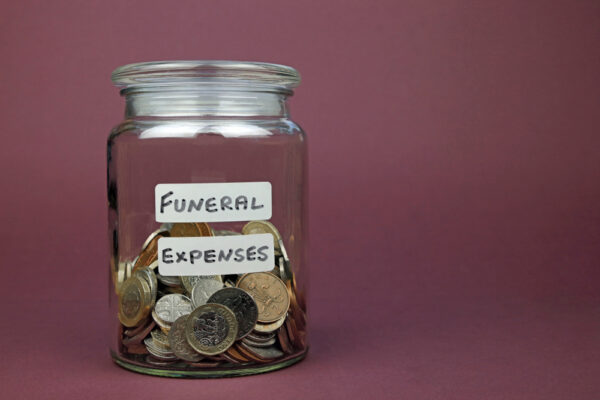
Top 5 Actionable Strategies for Your Senior Portfolio
With a solid understanding of the basics, you can now explore practical strategies to structure your investments. These five approaches are widely used by retirees to prioritize safety, generate income, and preserve capital. You can use one of these strategies or combine elements from several to fit your personal needs and risk tolerance.

1. The “Bucket” Approach for Clarity and Security
The bucket strategy is a popular and intuitive way to organize your retirement finances. It involves dividing your money into three distinct “buckets,” each with a different purpose and time horizon.
Bucket 1: Cash and Equivalents (1-3 years of living expenses). This is your short-term fund, designed for immediate liquidity and absolute safety. It should hold enough cash to cover your living expenses for one to three years, after accounting for guaranteed income from Social Security or pensions. This money should be held in ultra-safe places like high-yield savings accounts, money market funds, or short-term CDs. The goal here is not growth, but accessibility. Knowing you have years of expenses covered in cash provides immense peace of mind and prevents you from having to sell other investments during a market downturn.
Bucket 2: Income Generation (4-10 years of expenses). This bucket is designed to refill your cash bucket over time. It is invested in low-risk, income-producing assets. Examples include high-quality corporate bonds, municipal bonds (if you are in a high tax bracket), Treasury bonds, and conservative income-focused mutual funds. The investments here are more stable than stocks but offer better returns than cash. For example, you might build a bond ladder (see next strategy) within this bucket to ensure a steady stream of maturing bonds that can be moved to your cash bucket.
Bucket 3: Long-Term Growth (funds needed 10+ years from now). This bucket contains the portion of your portfolio with the longest time horizon. Because you will not need this money for at least a decade, it can be invested for modest growth to help your portfolio outpace inflation. This bucket might include blue-chip, dividend-paying stocks, low-cost index funds (like an S&P 500 fund), or a conservative allocation mutual fund. While it carries more risk, its long-term nature allows it to recover from market dips. A common allocation for this bucket in a senior portfolio might be 60% bonds and 40% stocks.

2. The “Bond Ladder” for Predictable Income
A bond or CD ladder is a time-tested strategy for generating predictable income while managing interest rate risk. It involves splitting a sum of money into equal parts and investing each part in a fixed-income security with a different maturity date.
Here is a simple example: Imagine you have $50,000 to invest. Instead of putting it all into a 5-year CD, you could build a ladder:
- $10,000 in a 1-year CD
- $10,000 in a 2-year CD
- $10,000 in a 3-year CD
- $10,000 in a 4-year CD
- $10,000 in a 5-year CD
Each year, one of your CDs will mature. When the 1-year CD matures, you can use the cash if you need it or, if not, reinvest it in a new 5-year CD. The next year, your original 2-year CD matures, and you do the same. After five years, you have a CD maturing every single year, providing you with regular, predictable access to your funds. This strategy gives you the flexibility to capture higher interest rates if they rise, as you are frequently reinvesting. It also protects you from having all your money locked into a low-rate bond if rates go up. This method provides some of the most safe returns available to investors.

3. Dividend-Focused Investing for Income and Growth
For seniors who are comfortable with a bit more risk in exchange for higher income and growth potential, focusing on dividend-paying stocks can be an excellent strategy. Dividends are a portion of a company’s earnings paid out to its shareholders. Stable, well-established companies (often called “blue-chip” stocks) in sectors like utilities, healthcare, and consumer staples have a long history of paying and increasing their dividends over time.
The goal is not to chase the highest dividend yield, which can sometimes be a sign of a company in distress. Instead, focus on “Dividend Aristocrats”—companies in the S&P 500 that have increased their dividend for at least 25 consecutive years. This track record demonstrates financial stability and a commitment to shareholders. A portfolio of 15-20 such stocks, or a low-cost dividend-focused exchange-traded fund (ETF), can provide a reliable income stream that tends to grow faster than inflation. This approach is a cornerstone of many senior investing plans because it combines income with the potential for capital appreciation.

4. Immediate Annuities for a Guaranteed Paycheck
An immediate annuity is an insurance product, not a traditional investment, but it can play a powerful role in a low-risk portfolio. In its simplest form, you give a lump sum of money to an insurance company, and in return, they agree to pay you a fixed amount of money every month for the rest of your life (or a specified period).
This creates a personal pension, providing a guaranteed income stream that you cannot outlive. This can be especially valuable for covering essential living expenses like housing, food, and healthcare. For example, a 70-year-old man might use $100,000 to purchase an immediate annuity that pays him $600 per month for life. This income is predictable and secure, regardless of what happens in the stock market. However, there are trade-offs. The primary drawback is illiquidity—once you purchase the annuity, you typically cannot get your principal back. Annuities can also have high fees and complex terms, so it is crucial to work with a trusted advisor and fully understand the contract.

5. Ultra-Conservative Mutual Funds and ETFs
For those who prefer a hands-off, diversified approach, ultra-conservative mutual funds and ETFs are excellent low-risk options. These funds automatically spread your investment across hundreds or even thousands of securities, providing instant diversification at a very low cost.
Look for funds with labels like “capital preservation,” “conservative allocation,” or “short-term bond fund.” A conservative allocation fund might hold a mix of 70% bonds and 30% stocks, rebalancing automatically to maintain that target. A short-term government bond fund invests only in debt issued by the U.S. government with short maturities, making it one of the safest investments available. When choosing a fund, pay close attention to the “expense ratio,” which is the annual fee. Look for funds with expense ratios below 0.20%, as high fees can significantly erode your returns over time. These funds are an easy way to achieve a professionally managed, low-risk portfolio without having to pick individual stocks and bonds yourself.
• • •


















